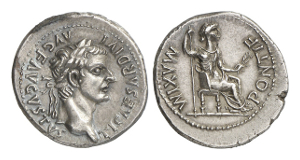NUMISMATICS AND COLLECTION
 It is difficult to convey what the collector of old coins is going through, having found the necessary coin after a long search. This is an incomparable joy of the discoverer of rarities. And if near you, when you are considering a copper coin turned green from time, it turns out to be a rather dry practical person, try to intelligibly explain your condition to it.
It is difficult to convey what the collector of old coins is going through, having found the necessary coin after a long search. This is an incomparable joy of the discoverer of rarities. And if near you, when you are considering a copper coin turned green from time, it turns out to be a rather dry practical person, try to intelligibly explain your condition to it.
Will he understand that collecting coins is akin to his passion for painting and art, that collecting coins is another step in history, knowledge of social relations, ethnography.
And indeed, which of the numismatists, before putting a coin into a cherished place, will not know about it everything that can be learned from history, but in passing from geography or political economy. Therefore, the stock of encyclopedic knowledge of a coin collector is proportional to the number of coins that pass through his hands and the time they are collected.
A coin is first of all a history, multifaceted, centuries-old.
Numismatists with experience will tell you why the reform project S. Y. Witte failed to convert the ruble in the manner of the franc to “Rus” [1], explain who should be considered the pioneers of the Azores – Carthaginians or Spaniards, whether Herodot is right, who considered the Medes to be the first chasers coins, or preferably information of Strabo.
At the coin collectors you will find out that on the 13th century Flanders coins there was a hangman with an ax, at the feet of which lay a severed hand. This is evidence of the cruelty of medieval jurisprudence in the fight against counterfeiters. In short, the interests of collectors are not limited to the study of the weight of the metal, the image of a coin.
Which of the numismatists, dreaming of becoming the owner of the ruble Constantine, did not recall the dense ranks of the insurgent guards on the Senate Square in December 1825?
Coins brought to us not only the names of kings, leaders and emperors, but also poets, historians, doctors. The clothes of the heyday of ancient Greece were studied with Greek coins. French hairdressers returned the hair of the Roman Empress Faustina to fashionable Parisian ladies. There are not many cultural monuments for a long time, but their images have brought coins to our day. What were the columns in the temple of Artemis in Ephesus, told the little coin circles.
A wide range of children’s clothing from Turkey. Crazy discounts up to 50%! Hurry up!
From the coins we know, in honor of whose victories Nika Samothrace was created. On them we saw a she-wolf who nurtured Romulus and Remus. What is a Delphic tripod, we also learned from antique coins.
Coins – Objective Witnesses of History! By them you can judge the wealth of the state, economic relations, wars, victories and defeats …
A long time ago, a very long time ago, the original form of the coin attracted some inquisitive person. He not only examined it from all sides, but also carefully put it in a box, and maybe a jug or a casket. And he did it not for the value of the coin, but because of a sudden interest in it, to an unusual or artfully made image.
History did not preserve his name, but he undoubtedly lived a long time ago, before our era, when intensive exchange and trade in the Mediterranean basin and other foci of world culture made it possible to see how small the exchange equivalents are different – coins in different cities and states. This should be especially attributed to ancient society, where, due to early class stratification, considerable money was transferred into the hands of the slave-owning nobility, and thanks to wealth, it received a lot of free time. The art of ancient Rome and Greece left many thousands of original, not similar to each other coins.
In 1965, a museum in the Hungarian city of Debrecen received as a “gift” from an unknown ancient coin collector 273 silver Roman coins. It was not a treasure, but a carefully selected collection that has passed thousands of years to tell about the noble passion of an unknown collector.
In the hoards, as a rule, find a lot of coins of the same period, year, image. Here we are dealing with a selection of coins over the years, covering a considerable period of time.
Eyewitness accounts of how the Roman emperor Augustus, wanting to encourage those close to him, handed out in ceremonial cases various ancient and foreign coins, remained. It would hardly have made any special sense if the collection of coins among the Roman nobility was not common.
At the beginning of the Renaissance, when the Italian masters resurrected the skilful minting of coins according to ancient samples, collectors reappeared in Italy. The famous poet Petrarch was the owner of a very large collection of coins, part of which he presented to Emperor Charles I.
In the XVI century, Cardinal Martikusi collected about 1000 antique gold coins. The prince’s house d’Este possessed a famous numismatic collection. In Basel, Amerbach, Professor Iselin, were collecting coins.





